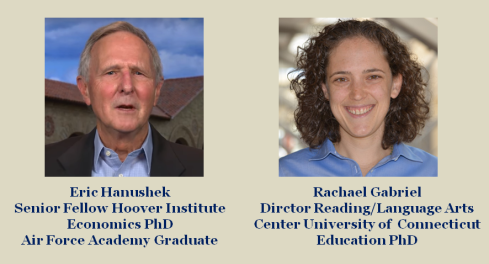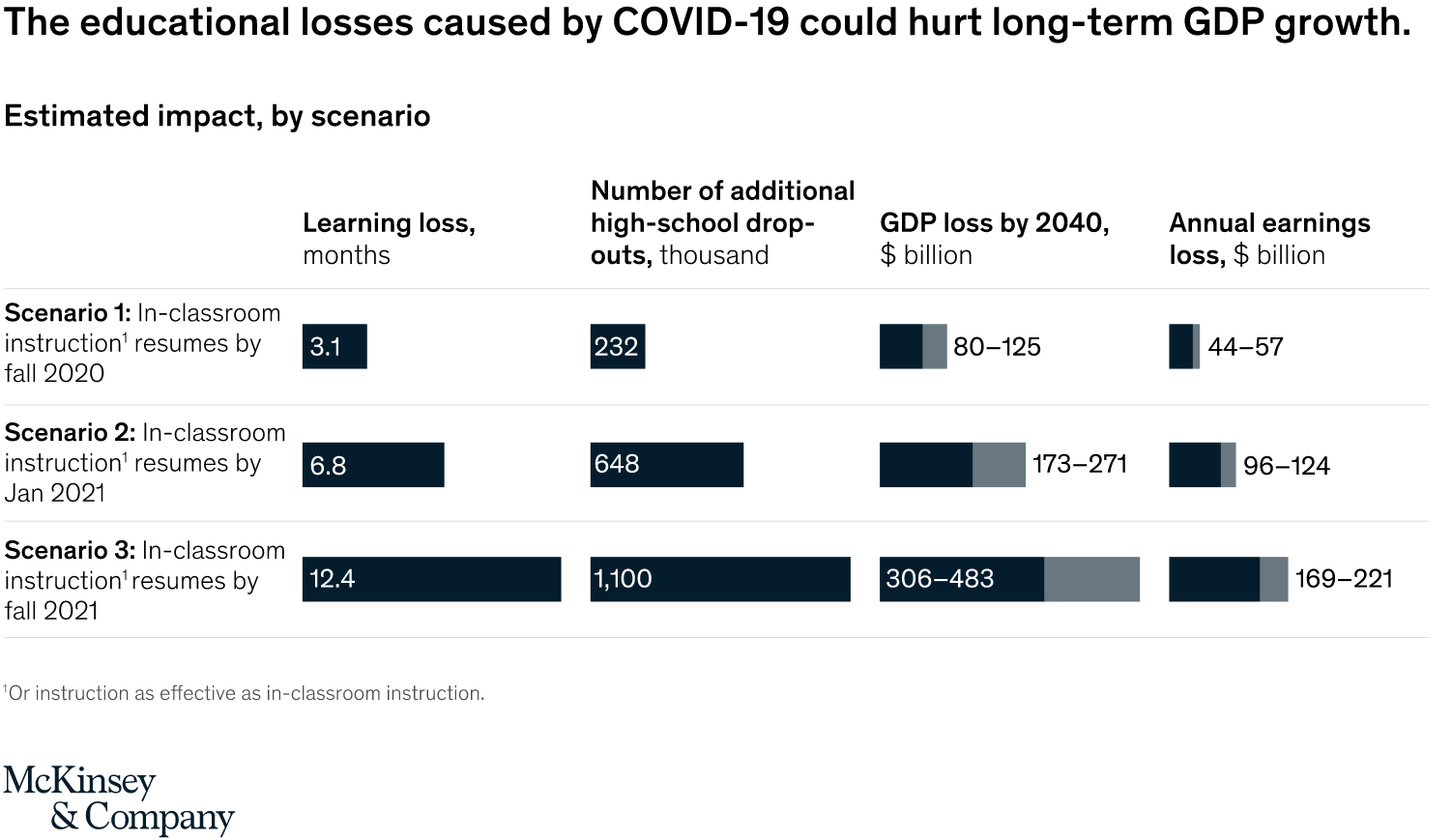By Thomas Ultican 3/12/2024
Crazy pants Eric Hanushek claims COVID “learning-loss” could cost American students $31 trillion in future earnings. He burst onto the education world’s consciousness with his 1981 paper, claiming “there is no relationship between expenditures and the achievement of students and that such traditional remedies as reducing class sizes or hiring better trained teachers are unlikely to improve matters.” This played well with billionaires from the Walton family but had no relationship with reality. Likewise, his January 2024 “learning-loss” claims were straight up baloney.
Learning-Loss Reality
In the summer and fall of 2020, NWEA, McKinsey, CREDO and others produced unfounded analysis of looming learning-loss disaster caused by school closures. Since there was no data, summer learning-loss was used as a proxy, a bad one. In 2019, Paul von Hippel’s investigation threw great doubt on the 1982 Baltimore study that powerfully supported summer learning-loss belief. He showed using modern testing analysis, learning-loss was doubtful and in some cases, students gained during the summer. This data, used to trumpet a national education crisis, had no validity.
Unfortunately, billionaire-financed organizations, out to undermine public schools, do not care.
From March 2020 to February 2021, almost a half-million people died of COVID-19. There were no vaccines or Paxlovid type drugs. Refrigerator trucks stored dead bodies and more than 2 million Americans were hospitalized, some on ventilators for months. Schools were closed; unemployment jumped to 15%, murder rates shot up by 30% and fear was rampant.
In this environment, teachers heroically switched to online education.
K-12 students lost parents, became isolated from friends and visited family members in hospitals. Many kids struggled with online classes over inadequate internet feeds, parents were losing jobs and children could not visit grandparents.
Of course the rates of learning decreased but less than one might expect.
NEAP Data Explorer Graphs
The National Assessment of Education Progress (NAEP) 8th grade data graphs above show a modest decrease in both math and reading scores between 2019 and 2022. Reading fell by three points and math by eight points on a 500 point scale. I do not see catastrophe in these declines because given the context of the pandemic they strike me as rather small, with no signs of pending economic collapse.
Students have been out of school for months with medical or other reasons. I and others with this experience can testify that we were able to recover quickly. Claiming learning-loss disaster from COVID shutdown does not make sense.
Another interesting result from the 2022 NAEP test data comes from Commissioner Peggy Carr of the National Center for Education Statistics. She said, “There’s nothing in this data that tells us there is a measurable difference in the performance between states and districts based solely on how long schools were closed.”
To add further weight, New York Times opinion writer David Wallace-Wells wrote:
“In New York City, the nation’s largest school district, schools reopened in September 2020. There, average scores for reading fell by about a point for fourth graders and improved by about a point for eighth graders; in math, fourth-grade scores fell by nine points (statewide scores fell by 12) and eighth-grade scores fell by four points (statewide scores fell by six). In Los Angeles, the second-largest district, schools stayed closed through January 2021. There, average scores actually improved in fourth-grade reading, eighth-grade math and eighth-grade reading, where they improved by a robust nine points (to 257 from 248). Scores fell only in fourth-grade math (to 220 from 224).”
This January, the New York Times interactive posted “Students Are Making a ‘Surprising’ Rebound From Pandemic Closures”, based on a joint project from Stanford and Harvard Universities. Its executive summary states:
“Despite the lack of improvement during 2022-23 on assessments provided by NWEA and Curriculum Associates, we find that student achievement did improve between Spring 2022 and Spring 2023: in fact, students recovered approximately one-third of the original loss in math (0.17 grade levels out of the 0.53 grade levels decline from 2019-2022) and one quarter of the loss in reading (0.08 grade levels out of the 0.31 grade level decline from 2019-2022). Such improvements in grade levels in a single school year mean that students learned 117 percent in math and 108 percent in reading of what they would typically have learned in a pre-pandemic school year. These gains are large relative to historical changes in math and reading achievement on the National Assessment of Educational Progress.”
George Bush’s Secretary of Education, Margaret Spelling, says, “We’re slowly recovering, but not fast enough.” That is from the woman who claimed 100% of America’s students would be above average by 2014. Without being a statistician, it never rang true to me. Her failure to recognize the great work of public schools says she has an agenda.
Outrageous Claims
Eric Hanushek’s new report claims, “Historical earnings patterns make it is possible to estimate what the learning losses documented by NAEP will cost the average student in the Covid-cohort: 6 percent lower lifetime earnings than those not in this cohort.” To document this, he links it to a publication by the Organization for Economic Co-operation and Development, referencing an article he wrote. Without evidence, he claimed Black students will have 8 percent lower lifetime earnings. His report is mostly unsupported assertions.
He states that “nations with more skilled populations grow faster” and asserts that pandemic learning losses mean the US will be less skilled, not growing as fast as “competitors”. Based on this, he postulated future economic losses for students of $28 trillion.
Seams he believes “competitors” would not have education setbacks from COVID.
Believing the pandemic brought harmful policy shifts, causing school quality to decline, he sees abandoning standardized test accountability as number one on his pantheon of bad moves. Teachers unions pushing for their preferred education policies seems wrong to Hanushek. After all, what do teachers know about good education? They are not trained MIT economists, like he is!
The one policy he sees bringing improvement is to put students with “top flight” teachers. This comes from the man who declared “hiring better trained teachers are unlikely to improve matters”. Hanushek suggests, “The highly-effective teachers could teach larger classes or added sections of courses with both monetary incentives and additional support for this work.”
Remember he does not believe smaller class sizes are important.
Hanushek makes non-scientifically supported assertions and then amplifies them. Like dishonest scientists, he cites his own suspicious work as evidence for new claims. His days of learning test score conversions and estimates of economic loss are these kinds of mere postulations.
A Humanistic Perspective
Professor of literacy from the University of Connecticut, Rachael Gabriel, wrote a 2021 piece for the Washington Post Answer Sheet Blog claiming, “There is no such thing as learning loss.” Her point was that even when not in school, young people are still learning. Professor Gabriel suggested:
“What if we imagined the “corona kids” had learned more than previous cohorts?
“What if we assumed they were more resilient, well-rounded, creative, and had even more potential than previous cohorts because of what they have lived through and lived without?
“What if we assumed that instead of behind, they were advanced in ways that matter beyond measure?”
Everyone should be confident that if schools and school teachers are allowed to do their job with no “expert” interference, students will be fine. Education and learning are not linear processes. When children are ready to learn, an explosion of growth occurs. It is the intellectual equivalent to that year I grew a foot taller.
Learning-loss is not the big danger facing America’s students. The real danger is the likes of McKinsey, NWEA, CREDO and research leaders like Eric Hanushek.








